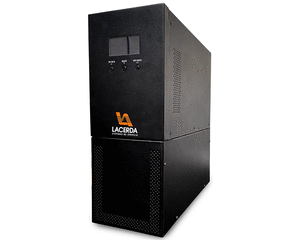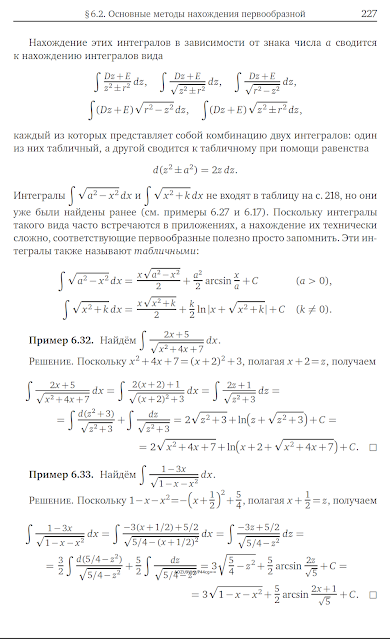VIEW FULL TEXT:
No Blog Eletrônica de Potência você encontrará informações sobre teses,artigos,seminarios,congressos,tecnologias,cursos,sobre eletrônica potência. “TEMOS O DESTINO QUE MERECEMOS. O NOSSO DESTINO ESTA DE ACORDO COM OS NOSSOS MERITOS” ALBERT EINSTEIN. Imagination is more important than knowledge, for knowledge is limited while imagination embraces the entire world. EL FUTURO SE CONSTRUYE HOY,EL SUCESSO NO ES FRUTO DE LA CASUALIDAD,SE HUMILDE ,APRENDE SIEMPRE CADA DIA.
AUTOR DO BLOG ENG.ARMANDO CAVERO MIRANDA SÃO PAULO BRASIL
"OBRIGADO DEUS PELA VIDA,PELA MINHA FAMILIA,PELO TRABALHO,PELO PÃO DE CADA DIA,PROTEGENOS DO MAL"

terça-feira, 25 de junho de 2024
quinta-feira, 20 de junho de 2024
Power Line Noise Suppression using N-path Notch Filter in ECG Signal Acquisition-Doctoral Thesis Shibaura Institute of Technology-Author: Khilda AFIFAH
POWER LINE NOISE SUPPRESSION USING N-PATH NOTCH FILTER IN ECG SIGNAL ACQUISITION Author: Khilda AFIFAH Supervisor: Prof. Nicodimus RETDIAN
A thesis submitted in fulfillment of the requirements
for the award of the degree of
Doctor of Engineering
Shibaura Institute of Technology
2020/September
Abstract
POWER LINE NOISE SUPPRESSION USING N-PATH NOTCH FILTER IN
ECG SIGNAL ACQUISITION
by Khilda AFIFAH
Bio-sensing activities such as electrocardiogram (ECG) and electroencephalography (EEG) are challenging to obtain high-quality electrical signals because biomedical signals have small amplitude and low frequency. When performing a biomedical signal acquisition, common-mode noise such as power line interference appears
near the desired biomedical signal. It has made a problem when the power line
interference has amplitude higher than the primary signal.
Common-mode noise reduction has been recognized as important research. The
driven right leg (DRL) circuit was significant and effective to suppress commonmode noise. However, in the actual ECG measurements using DRL circuit, sometimes noise still appears at the output and mismatching in the electrode impedance
makes an impact to convert common-mode noise into a differential input voltage.
The body in DRL circuit is expressed as a single node and cannot be used to simulate the effect of the electrode impedance mismatch. Therefore, a new body model is
needed to be able to analyze the effect of electrode impedance mismatch and other
problem with common body model.
The proposed DRL circuit is an improved circuit from common DRL circuit. The
first improved DRL circuit, biomedical signal is expressed by current source in parallel with electrode impedance. The simulation results of improved circuit show mismatch between right and left electrode impedance makes noise appears at the output signal. The common human body from DRL circuit represented skin-electrode
impedance as a single node. The second improved circuit, the skin-electrode impedance
is expressed by resistance and stray capacitance are on each electrode. The simulation results of this improved circuit show the proposed circuit achieved smaller noise
when stray capacitance in the arm and right leg are the same. Combination between
proposed human body model and DRL circuit achieved output of the circuit is noise appear in the output signal. Therefore, human body model with DRL circuit still
need another filter to get high quality biomedical signal (noise free signal).
The other techniques to suppress common-mode noise have been proposed by
using digital and analog notch filters. The technique to suppress common-mode
noise used a digital notch filter, but it requires an analog front-end with a wide
dynamic range since the noise contaminated input signal need to be converted to
digital signal. The techniques with analog notch filter such as conventional Npath notch filters have disadvantage because these techniques require 3GΩ switches
off-resistance and 18 paths to reach notch depth target. The problem to implement previous N-path notch filter is the difficulty in implementing switch with offresistance. On-chip implementation of the system is also a challenge in the realization of portable ECG devices because the notch filter has a large time constant in
which requires large capacitance and high resistance.
Two topologies of N-path notch filter with leak buffer circuit have been proposed. The proposed N-path notch filters are Topology 1 and Topology 2. Topology
1 and Topology 2 achieved notch depth of 62.4dB and 63dB in measurement results
with sampling frequency 50Hz, even if the proposed circuits use less number of path
and small of switches off-resistance. Topology 1 and Topology 2 are verified using artificial ECG signal with 2Hz which is contaminated by power line interference
with frequency 50Hz or 60Hz. Experiment results show that the proposed circuit
significantly reduces the power line noise.
VIEW FULL THESIS:
sexta-feira, 24 de maio de 2024
quinta-feira, 23 de maio de 2024
PSpice Simulation - Parametric Sweep
PSPICE SIMULATION - PARAMETRIC SWEEP
※
After placing the element, double-click on the element to modify its properties.
If you double-click the upper left corner of the table that appears, the property will change from horizontal alignment to vertical alignment.
Click New Row at the top left.
Enter Rvar corresponding to the variable name as the new property and 200 as the desired initial value.
Click Apply to continue adding new rows, and click OK to finish.
When finished, press OK.
Place the mouse cursor on the added value of Rvar, right-click, and select display.
Select Name and Value from the properties that appear.
Press OK, right-click the open tab to save it, then right-click again to close it.
When you return to the circuit diagram, you can see that the initial values of the variables have been set.
Select AC Sweep/Noise. It varies from 10 to 100 kHz and has 100 points per section.
Check Parametric Sweep in Options on the left.
If you do not want to change the value linearly but want to change it to specific values, select Sweep type as Value list at the bottom instead of Linear and write the values.
Values can be separated by spaces or commas.
ex) 5m, 10m, ...
Once the setup is complete, place a dB scale voltage probe as in the previous AC sweep post.
3. Execution result
First, click the Perfromance analysis icon on the toolbar at the top of the simulation window.
Then, a new plot is created at the top, and you can confirm that it is selected through SEL>>.
First, select Bandwidth_Bandpass_3dB(1) from the functions on the right ,
Then, you can check the size of the pass band according to the Rvar value.
Please keep in mind that performance analysis is used when interpreting multiple results.
Parametric Sweep conducts simulation by changing element values set as variables in the circuit.
This has been covered in the previous DC sweep, and this is because Parametric Sweep can be implemented not only by sweeping variables arbitrarily set by the user, but also by changing the values of used elements.
1. Circuit diagram
After writing, apply vcc and vee through the vcc element of place power, and give the name of the out node through place net alias.
One thing to note here is that the value of resistance R2 must be entered as {Rvar}. This means that it will have a value as a variable called Rvar.
Also, pay attention to the input terminal sign of LM324. After placing the element, you must press the V key to invert it up and down.
Now we need to set the value of the variable Rvar.
The value of the variable uses the element that appears when you search for PARAM in the place part.
2. Simulation settings
Select AC Sweep/Noise. It varies from 10 to 100 kHz and has 100 points per section.
Since the value you want to change is a variable called Rvar set by the user, select Global Parameter and write Rvar in the name. The value is increased by 200 from 200 to 1k.
If you run the simulation, you can get the following results.
You can see that the area of the pass band is different depending on each resistance value.
Therefore, for analysis, let's find the area of the pass band that is 3dB lower than the maximum value.
Since it is analyzed using multiple results, it must be interpreted through the performance analysis discussed earlier.
When performing performance analysis using the methods discussed above, there are times when it does not execute due to errors.
Therefore, this time we will proceed with performance analysis in a slightly different way.
Select Trace > Add trace from the menu at the top of the simulation window.
and then select V(out) from the variables on the left.
Assinar:
Postagens (Atom)















































